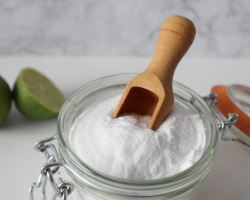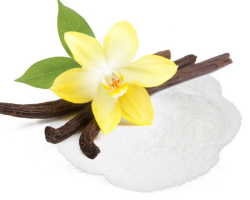Whether to add eggs to yeast dough or not - every housewife decides on their own. But will the dough turn out lush and soft?
Content
- How to separate the protein from egg yolk?
- Why are eggs add eggs to the yeast dough, why?
- Do I have to have eggs in yeast test: is it necessary to add?
- The maximum number of eggs that can be in yeast test?
- I forgot to add an egg to the yeast dough: what should I do, and how to affect baking?
- What needs to be added to the yeast dough so that it does not stale?
- Video: Find out the secrets of yeast dough. Why can't it work?
- Video: The secret of the right yeast dough. Detailed video recipe
- Video: Add it to the yeast dough - the pies are simply amazing
One of the main fears who visit the hostesses who decided to do baking is the dough that does not rise. In order to avoid such a problem, you need to clearly know which ingredients should be added to flour, and the presence of which is better to avoid.
Read on our website another article on the topic: "How to knead the dough?". You will find culinary tips and secrets, life hacks, reviews.
One of the most controversial and discussed ingredients added to the dough is eggs. In this article we will try to figure out whether it is worth adding eggs to yeast dough or it’s better not to do it? Read further.
How to separate the protein from egg yolk?

Eggs are a very popular ingredient present in a huge number of recipes. Sometimes they are added entirely, and sometimes, you have to separate proteins from yolks. At the same time, the separation of proteins with yolks is not the easiest procedure that can focus on many inexperienced housewives, and spoil the cooking process.
In fact, there are a very large number of ways to separate the egg yolk from the protein. Consider some of the most popular:
- A simple way
The easiest way is already experienced housewives and chefs. Despite the fact that it is called simple, inexperienced housewives can hardly do this for the first time. It is necessary to carefully break the shell of the egg with a knife or on a bowl. At the same time, the half in which the yolk lies, hold evenly - do not tilt. Most of the protein at once with a bow in a bowl. Hold the empty shelter of the shell in your hand. In the second - the yolk is located and a little protein remained. Tilt this soul mate slightly above the bowl, the protein will begin to flow out. The main thing is not to miss the yolk, you can hold it with the second part of the shell. Everything is ready, the yolk remained unharmed in one of the shells of the shell.
- Hand separation
Take the egg and break it with a knife, or on the edge of the plate. Then gently pour the broken egg into a deep bowl. As a result, the yolk should be in the very center of the bowl. Now carefully take the yolk with your fingers and pull it out of the container.
- Pouring protein
It sounds surprising, but the protein really can just pour it out. Make two holes in the egg - on the stupid and sharp side. In this case, one of the holes should be wider than the other. Now put the egg on a plate and let the squirrel leak through a larger hole. It should be borne in mind that this procedure takes time and patience.
- Special devices
To date, there are a huge number of separators and other devices designed to separate proteins and yolks that can be bought in the store. As they say, progress does not stand still.
As you can see, despite the apparent complexity, the process of separating proteins and yolks can be very simple and even interesting. You only need a little extra time and ingenuity.
Why are eggs add eggs to the yeast dough, why?

Baking made of yeast dough is a special kind of culinary art. It is very popular and attractive due to its splendor and aroma. The main secret of such baking is the test. Of course, all the details and features of the preparation of yeast dough require a separate study. However, there is one ingredient that deserves special attention - these are eggs. Why are they added to flour and how it affects the dough - we will analyze further.
- Few people know, but it is the eggs added to the flour, subsequently, make the dough with a butt.
- Thanks to the eggs, the bread becomes wet and light.
- At the same time, the result of the preparation of baking can be completely different, depending on the number of ingredients and the method of adding them.
- Simply put, the more eggs are added to the dough, the more yellow and wet will be the crumb.
It is worth adding that the number of eggs in the test, like other ingredients, is a matter of taste. It is only necessary to know what the addition of certain components will lead to and how baking will change from this. Read further.
Do I have to have eggs in yeast test: is it necessary to add?
Another important issue related to the presence of eggs in a yeast test: is it really important to add them or can other ingredients be dispensed with? Do I have to have eggs in yeast test, is it necessary to add? Consider this issue.
- In fact, add eggs to yeast dough not necessary.
- There are a huge number of billet recipes without this ingredient. For example, you can add to the dough starch or manku (pair of tablespoons), or other ingredients.
- The dough without eggs is called lean and baking of it also turns out to be very tasty and lush.
As we see, the presence of eggs in the test is a matter of taste and you can do without them. There are a lot of ingredients that can replace this product, if desired. Read further.
The maximum number of eggs that can be in yeast test?

Now we know that putting this product in yeast dough is not at all necessary. However, if you still add eggs, then how many should there be? The maximum number of eggs that can be in yeast test? We will answer this question.
- In fact, there are no rules and instructions for the number of eggs added to the dough. It depends on the taste.
- However, it must be borne in mind that the more eggs are present in the test, the more you need to add yeast there, and this will accelerate the growth of the dough itself.
It is worth clarifying that the required number of eggs and other ingredients is usually indicated in the recipe, and its absence opens up wide opportunities for culinary improvisation. Under the below, useful information. Read further.
I forgot to add an egg to the yeast dough: what should I do, and how to affect baking?
It often happens that housewives have to do several things at the same time, for example: cook, clean and monitor the child. In such a situation, it’s not at all difficult to forget to add some ingredient to the dish. We will figure out what will happen if you forget to add an egg to the yeast dough and how to get out of a similar situation. What to do, is it necessary to add additionally and how will it affect baking?
- In fact, there is nothing wrong with such a situation.
- The yeast dough may well do without eggs, losing only humidity and yellowness.
- However, if you still want to add eggs, then this is possible.
- It is only necessary to move the already made dough again, adding the desired ingredient, and then let him rise again.
As they say, there are no hopeless situations and any problem can be solved, with the help of ingenuity and great desire.
What needs to be added to the yeast dough so that it does not stale?

For any housewife engaged in pastries, it is important that she remains appetizing and does not stale as long as possible. How to make the yeast dough remain lush and soft for a long time? What needs to be added? We will answer this question further.
- In order for the dough not to stale as long as possible, experienced housewives put a little sour cream in it during the batch.
- You can also reduce the number of eggs because the protein increases the stiffness of the dough. But, if you still want to put eggs, then only the yolk can be added. Or along with the protein, but beat it separately to a lush foam.
The main secret the splendor and softness of the yeast dough is to add starch (enough 1-2 tablespoons) and a small amount of soda. MANKA ( 1-2 tbsp. tablespoons) will help the finished pastries remain soft for several days. Read more in another article on our website on this link.
The freshness of bakery products is perhaps a key factor that affects their appetizing. After all, few people will like it, there are callous and hard buns, pies or bread. However, to extend freshness endlessly, it still does not work. Therefore, it is better not to bring and eat pastries before it before it begins to blacken.
At the end it remains to add that there are a huge number of baking recipes. At the same time, each product is delicious in its own way. And adding eggs to the dough or not is a matter of desire and taste preferences. Experiment with taste, prepare different baking with or without eggs, and you will find your unique recipe that you and your household will like. Enjoy your meal!
Video: Find out the secrets of yeast dough. Why can't it work?
Video: The secret of the right yeast dough. Detailed video recipe
Video: Add it to the yeast dough - the pies are simply amazing
Read on the topic:







